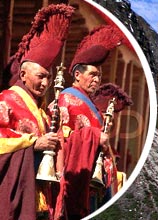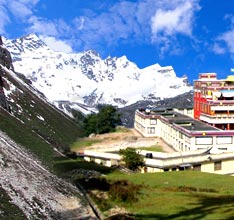Sikkim is a beautiful state in the periphery of
India. Nothing substantial has been known regarding the history of
Sikkim, still this article will try to capture a gist of the origin of
Sikkim. It is believed that 'Lepchas' or rong (ravine folk) were the
first inhabitants of Sikkim. Later, the 'lepchas' got engrossed with
other clans. In the 9th century, Guru Rinpoche, a Buddhist saint,
happened to pass through the lands of Sikkim. The monk sanctified the
land and introduced the religion of Buddhism to Sikkim. He also
prognosticated that the state would be ruled by the monarchs in the
later centuries.
During the 13th century, Guru Tashi, who was a prince of Mi-nyak House
in Kham of Eastern Tibet, came in the Chumbi Valley of Sikkim and
settled down. The Sikkim Coronation Bank depicts Guru Tashi to be the
''first ruler of Sikkim who made way for a regular monarchy'. The
descendents of Guru Tashi learned the local culture and made good
relations with the 'Lepchas' clan. Owing to these relations, the
grandson of Guru Tashi became the chieftain of Sikkim.
In early 17th century, the Tibetans migrated to Sikkim and the
'lepchas' were enforced to leave their abodes. In the interim, the
struggle between the followers of the "Yellow Hats" and the "Red
Hats" cropped up in Tibet. The followers of the "Red Hats"
were forced to hunt for shelter in Sikkim. In 1642, Phuntsog Namgyal
(the fifth generation descendant of Guru Tashi) was made as the first
Denjong Gyalpo or the Chogyal (king) of Sikkim by the three great Lama
immigrants. Phuntsog Namgyal shifted his capital to Yuksam and formed a
centralized government.
Tensung Namgyal, the son of Phuntsog, acquired the throne in 1670 and
shifted the capital to Rabdentse. During the whole period of reign,
Sikkim underwent various reforms and with the arrival of Tenzing
Namgyal, the rule came to an end. With the onset of the British rule in
India, Sikkim became a puppet state. When the British were thrown out,
Sikkim emerged to be an independent state in India. After much
controversies and disputes among countries like Nepal, China and India,
Sikkim was officially declared to be the 22nd Indian state in 1975.








